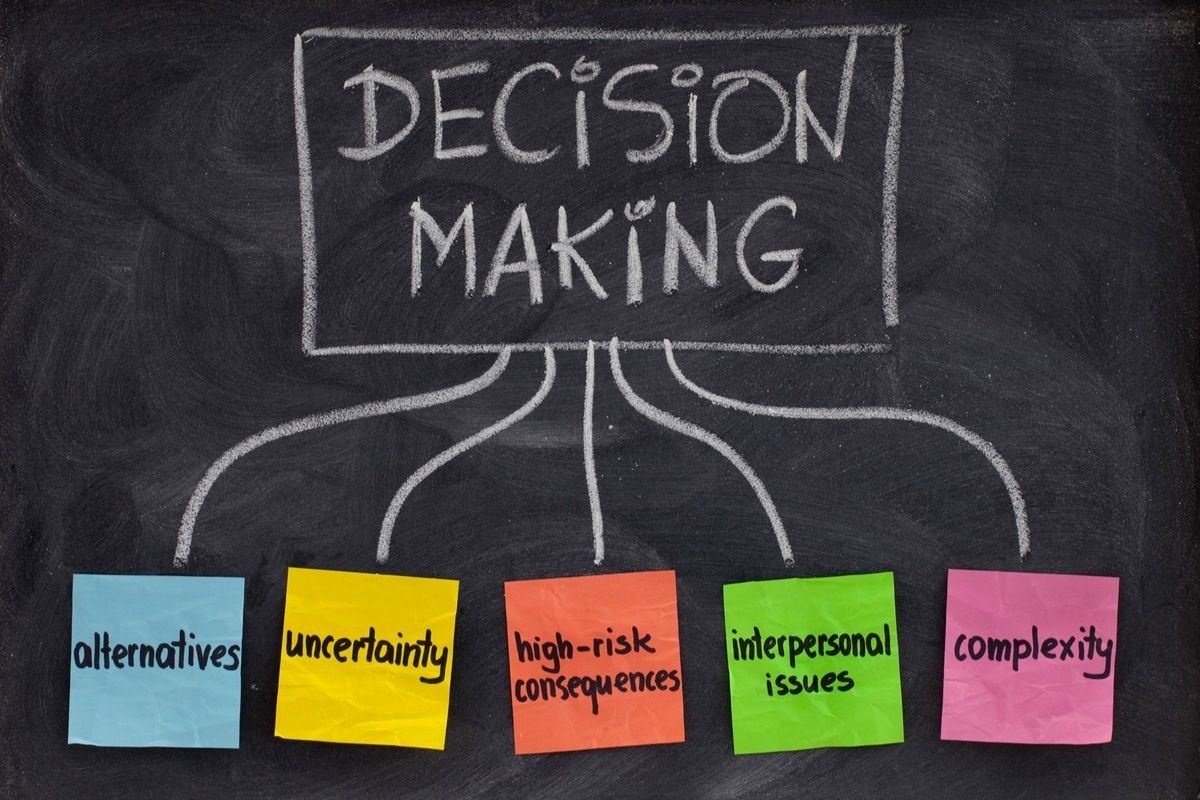Making difficult decisions is one of the most daunting challenges leaders face. The weight of responsibility, the complexity of the issues, and the uncertainty of possible outcomes can be overwhelming. Yet, effective leadership decision-making is crucial for organizational success.
A Harvard Business Review article reported, “61% of executives told us they were not prepared for the strategic challenges they faced upon being appointed to senior leadership roles.” It noted that “50%–60% of executives fail within the first 18 months of being promoted or hired.”
The Challenges of Decision-Making in Leadership
Effective decision-making in leadership is fraught with challenges. One of the most significant hurdles is the lack of complete or accurate information. Studies show that only about 20% of companies are proficient in decision-making using financial information, highlighting the need for better data analysis and strategic planning by great leaders.
In 2024, Boeing faced significant decision-making in their leadership challenges under CEO Kelly Ortberg. Confronted with labor strikes, financial losses, and the need to revamp corporate culture, Ortberg had to make tough decisions to steer the company back on its course of action.
Table 1: “Boeing’s Leadership Challenges and Responses in 2024“
Challenge
Leadership Decision
Outcome
Labor Strikes
Negotiated with unions
Resumed operations
Financial Losses
Implemented cost-cutting measures
Reduced losses in subsequent quarters
Corporate Culture
Initiated cultural transformation programs
Improved employee morale and engagement
Additionally, uncertainty and ambiguity in making good decisions and decision making can lead to cognitive biases, causing leaders to make suboptimal choices. More than half of newly appointed executives find decision-making more challenging than expected, further emphasizing the complexity of this process.

Common Challenges in Decision-Making in Leadership:
Lack of complete information
Uncertainty and ambiguity
Cognitive biases affecting judgment
Pressure to make quick decisions
Fear of failure impacting confidence
The Role of Confidence in Decision-Making Among Leaders

Confidence is a crucial element in effective decision-making in leadership. It enables leaders to make informed and timely business decisions together, reducing hesitation and uncertainty. Confident business leaders exhibit key traits, including:
Self-assurance: Trusting their abilities and judgments
Decisiveness: Making firm choices without second-guessing
Effective communication: Conveying decisions to teams
Resilience: Bouncing back from setbacks
Visionary thinking: Aligning decisions with long-term goals
Walmart’s decision-making in its leadership in embracing digital transformation showcases the role of confidence in sound decisions. The company’s leaders confidently invested in digital ordering and loyalty programs, enhancing customer engagement and operational efficiency.
When leaders exude their power and confidence, they create a culture where teams feel empowered to contribute and innovate, driving organizational success.
Strategies for Building Confidence in Leadership Decision-Making
Building confidence in decision-making especially in leadership involves strategic practices that enhance clarity, resilience, and effectiveness.

1. Define Your Purpose
Clarifying core values and objectives enhances good decision making skills and-making clarity. Leaders who align and make decisions well with their mission and values make more confident choices.
2. Reframe Failure as Growth
Viewing failure as an opportunity for learning fosters resilience. Leaders who learn from mistakes strengthen their decision-making skills over time.
3. Use Constructive Criticism
Seeking and leveraging feedback refines decision-making processes. Constructive criticism provides insights possible solutions that enhance decision makers’ confidence and effectiveness.
4. Develop Emotional Intelligence
Fostering empathy and self-awareness helps leaders understand the impact of their decisions. Emotional intelligence ensures inclusive and positive outcomes through effective leadership.

Key Elements of Effective Decision-Making in Leadership
Building confidence in decision-making, especially in leadership, involves strategic practices that enhance clarity, resilience, and effectiveness.

1. Define Your Purpose
Clarifying core values and objectives enhances good decision-making skills and clarity. Leaders who align and make decisions well with their mission and values make more confident choices.
2. Reframe Failure as Growth
Viewing failure as an opportunity for learning fosters resilience. Leaders who learn from mistakes strengthen their decision-making skills over time.
3. Use Constructive Criticism
Seeking and leveraging feedback refines decision-making processes. Constructive criticism provides insights and possible solutions that enhance decision makers’ confidence and effectiveness.
4. Develop Emotional Intelligence
Fostering empathy and self-awareness helps leaders understand the impact of their decisions. Emotional intelligence ensures inclusive and positive outcomes through effective leadership.

Key Elements of Effective Decision-Making in Leadership
Strong decision-making in leadership involves several core elements that ensure the organization make sound and strategic choices:
Critical Thinking: Enhances innovation and efficiency
Information Gathering: Ensures data-driven decisions
Option Evaluation: Weighs risks and benefits effectively

Leaders should use tools like SWOT analysis and decision matrices to structure their buy in and evaluation process and make well-informed choices.
The Hardwood Manufacturing case study for example illustrates the potential solutions to effective decision-making in leadership through participative management. By involving employees in decision-making processes, the company experienced increased productivity and job satisfaction.
Table 2: “Impact of Participative Decision-Making at Hardwood Manufacturing“
Metric | Before Participation | After Participation |
|---|---|---|
Productivity | 75 units/hour | 95 units/hour |
Job Satisfaction | 70% | 85% |
Approaches to Confident Decision-Making in Leadership
Making tough strategic decisions often requires a combination of strategic planning and confidence. These approaches enhance decision-making in leadership under pressure:
1. Define Clear Objectives
Setting clear goals aids in evaluating options and making informed decisions that are aligned with organizational objectives.
2. Reflect on Past Decisions
Regularly assessing previous choices helps decision makers and leaders identify patterns that influence and improve future decision-making processes.
3. Foster Collaborative Decision-Making
Involving stakeholders ensures diverse perspectives and enhances effective decision making and quality, promoting trust among all participants and team members.
Commonly Asked Questions About Leadership Decision-Making
When discussing decision-making in leadership, several key questions often arise:
How do you approach complex decision-making?
Leaders analyze situations, evaluate options, and make informed choices under pressure.
Can you describe a time when you had to make a tough decision?
Leaders reflect on past experiences to showcase their decision-making abilities.
What role does confidence play in decision-making, especially in leadership?
Confidence helps leaders make timely and effective decisions while fostering trust in their teams.
Conclusion

Effective leadership decision-making is not just about making the right choices, but about making them with confidence. Leaders can enhance their decision-making skills and drive organisational success by building trust in stressful decisions through self-reflection, learning from failures, and seeking feedback. As leaders navigate complex decisions, they must remember that good decisions with confidence is a skill that can be developed over time.
By integrating these strategies and insights into their decision-making processes, leaders can make tough business choices and do so with the confidence that drives success.

A trailblazer in humanising leadership and building high-resilience teams. As a former United Nations Peacekeeper, he leverages his high-stakes experience to redefine leadership dynamics. With a career distinguished by numerous accolades, Joseph now helps organizations thrive through a human-centric approach, enhancing performance, productivity, and workplace culture.






